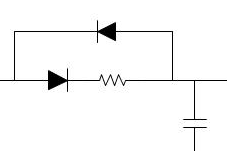Other Parts Discussed in Thread: UCC5304,
Tool/software:
How does adaptive deadtime control behave if the SW pin is not galvanically tied to the mid point of the FETs? I am hoping to use opto-gate drivers (UCC5304) on both outputs of the controller to achieve a high voltage output of 800V with near identical time. I will of course have a current sense on the bottom leg going to the controller
I would prefer to set the deadtime to account for the small delays.
Working on the prototype now for a fast deployment and would appreciate feedback for tech support.
Best,
Adrian



